
views
X
Research source
Constructing a Snare Trap
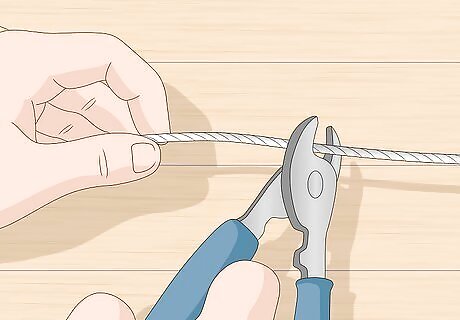
Cut an aircraft cable. Purchase a ⅛ inch aircraft cable. Then, use wire cutters to cut the cable so that it is 48 inches (1.2 meters) in length. You can purchase an aircraft cable at your local hardware store.
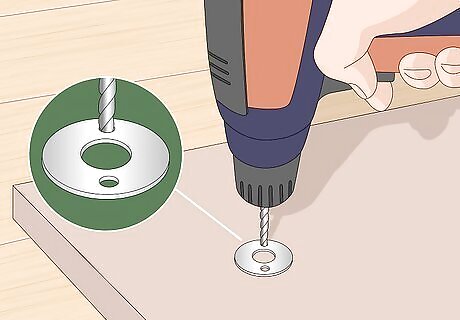
Drill two holes in a washer. Using a 5/32 inch drill bit, drill two holes in a flat washer. Lay the washer flat and drill one hole at the top and the other hole at the bottom of the washer. For example, the two holes should be located at 12 and 6 o’clock. Position the holes between the pre-existing center hole of the washer and the outer rim.
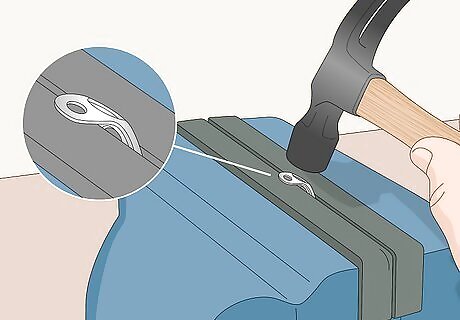
Pinch the washer using a vise. Place the washer in a bench vise and pinch the washer. It should bend slightly in half. This will form the lock for the snare.
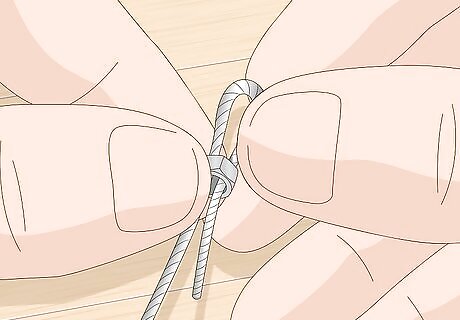
Thread the aircraft cable through a nut. Take one end of the cable and thread it through a ¼ inch nut. Then, thread it back through the nut creating a loop. Continue to pull the cable back through the nut until you have a loop with a ¾ inch (2 cm) diameter. Leave an extra inch of cable at the end.
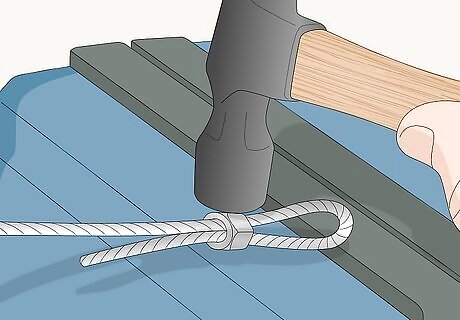
Hammer the nut closed. Place the nut on an anvil and hammer the nut so that the cable is fastened in place and the loop is secure.
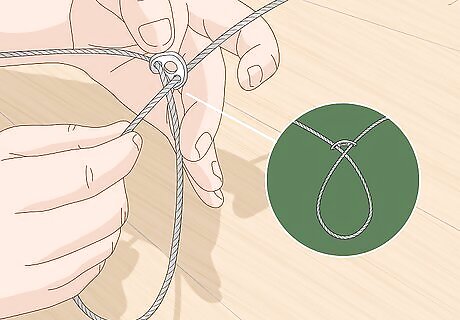
Push the cable through the washer holes. Then, push the cable through the top hole of the washer, from the outside of the bend to the inside. Pull the cable about a foot through the washer. Then, loop the cable through the bottom hole of the washer from the inside of the bend to the outside. This should create a loop.
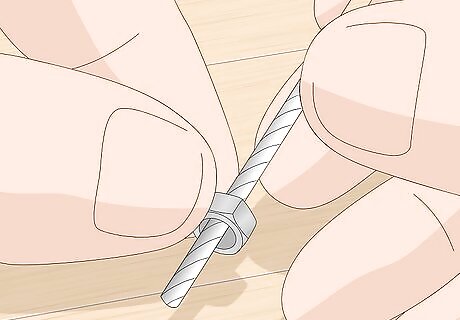
Thread the end of the cable through a nut. Create a stopper at the end of the cable. Thread the end through a ¼ inch nut. There should be about ½ an inch (1 cm) of cable sticking out through the center of the nut.
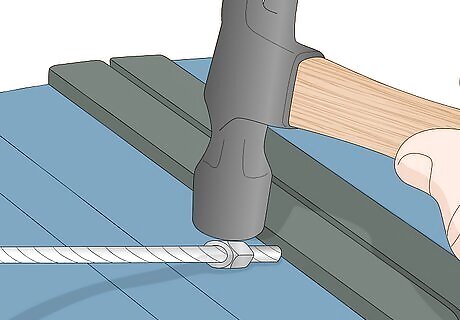
Hammer the nut closed. Place the nut on an anvil and hammer it so that the nut tightens around the cable, locking it in place. The snare is now complete and ready to be set.
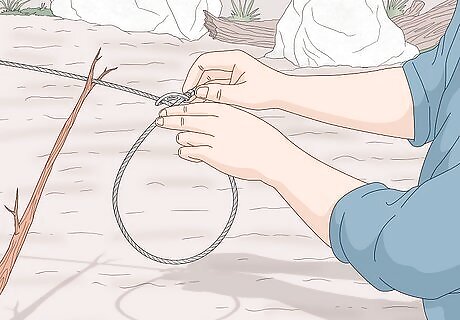
Set the snare trap. In order to set a snare trap, you want to place it on a trail or path that is frequented by coyotes. Then, attach the small looped end of the snare to a solid object, such as a fence post or small sapling. This will anchor the snare in place. Hang the larger loop from a nearby branch so that the bottom of the loop is approximately 12 inches (30 cm) off the ground. When a coyote walks past it will mistake the hanging wire for a branch and walk into the snare. The loop will tighten, trapping the coyote as it continues walking and the bent washer will prevent the loop from loosening.
Making a Trap Set
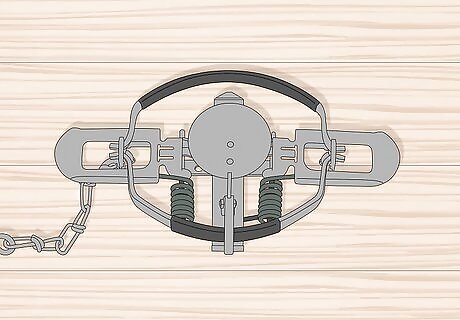
Select a trap. The most common coyote trap is a jaw trap. In order to make a trap set, purchase a no. 3 coil spring trap. This will be the appropriate size to trap a coyote. You can purchase a trap at your local hunting store.
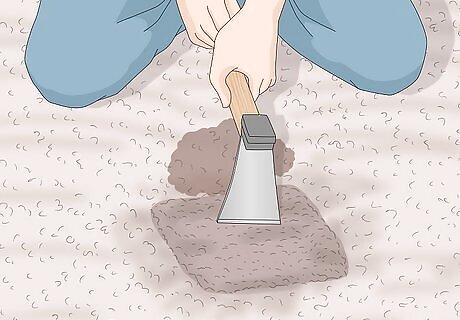
Create a trap bed. When setting a trap, you need to dig a trap bed. The trap bed should be large enough so that it can fit the trap when opened and laying flat. It should be about 1 inch (2.5 cm) deep so that it can be covered with dirt and hidden.

Cover the trap with dirt. Set the trap and then place dirt over top of the trap. Pour the dirt through a sifter so that it gently sprinkles over the trap. Try and make the area look as natural as possible. You can also lay larger sticks or mounds of grass and dirt along the sides of the trap. These can be used as guides to make sure the coyote steps on the trap. When placing guides, be sure to make it look as natural as possible. Do not put the sticks in a straight line. They need to look like they fell there naturally.
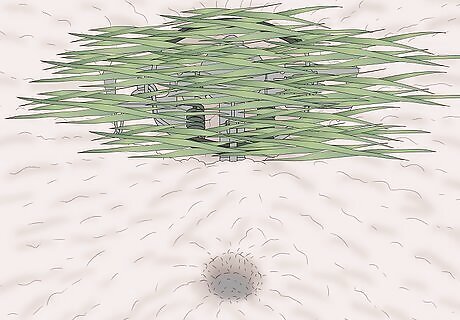
Dig a tunnel near the trap bed. Once the trap is covered by dirt, dig a hole about 8-10 inches away from the trap bed. The opening of the hole should be facing towards the trap bed and the hole should be two inches in diameter and dug on a 45 degree angle. The hole is supposed to look like it was dug by a small rodent, such as a mouse or mole and the small dirt pile that is covering the trap will look like the dirt that was removed from digging the hole.
Luring a Coyote to the Trap
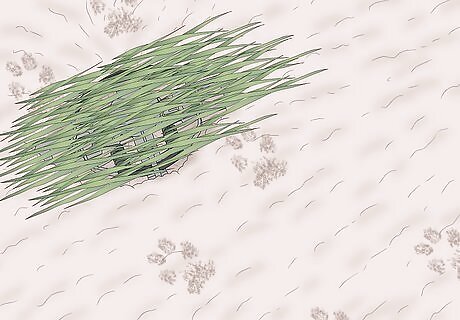
Position the trap on a natural coyote trail. The best traps are located in areas where coyotes naturally walk on a regular basis. Typically, these paths are located along fences or other field boundaries. Before setting your trap look for coyote tracks or traces of hair. This will help you determine where the coyotes travel.
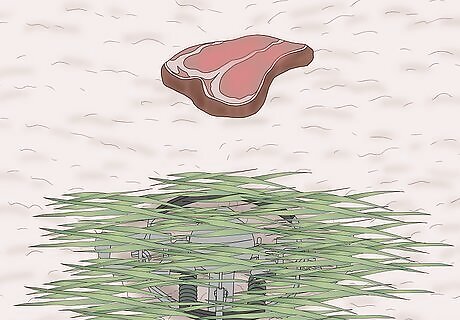
Use bait to lure the coyote. Meat is the best way to attract coyotes and can actually lure coyotes from a wide area. Use a piece of raw meat, such as beef or wild game. Coyotes will also be attracted to dog food, which can act as a cheap substitute to raw meat. This meat could also attract domestic animals, such as dogs. As a result, you should place the trap far away from homes. You can also purchase lures and scents from a hunting store.
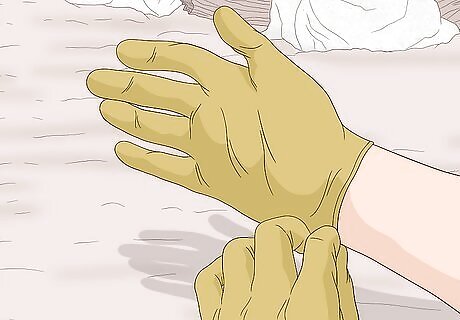
Ensure the traps do not have a human smell. Coyotes have a very sensitive sense of smell and will avoid an area if they smell humans. As a result, you should always wear gloves when setting traps so that your scent is not left near the trap. You can also spray the area surrounding the trap with commercial coyote lures to cover up the smell.

Approach a trapped coyote with caution. If you successfully trap a coyote, you will need to cautiously remove the coyote from the trap. Read the local laws in your jurisdiction concerning coyote trapping. In some states coyotes that are trapped must be euthanized. Other locations may have specific handling legislation. Always wear gloves when removing a coyote from the trap. This will help prevent the transmission of diseases, such as rabies. If the animal is still alive, you may want to contact a wildlife control expert.















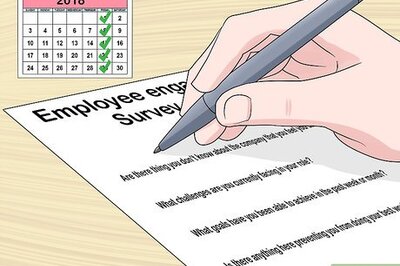


Comments
0 comment